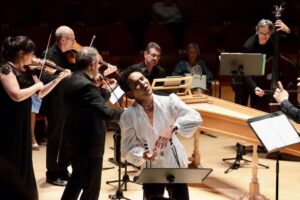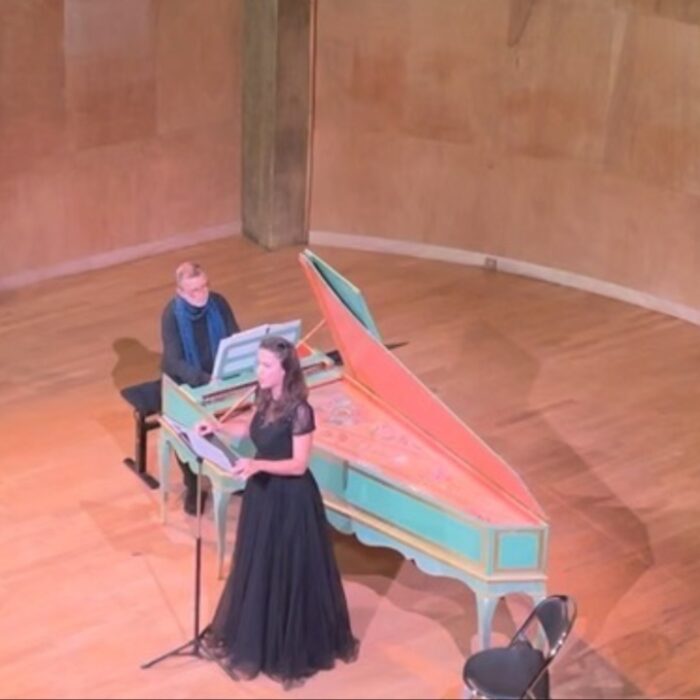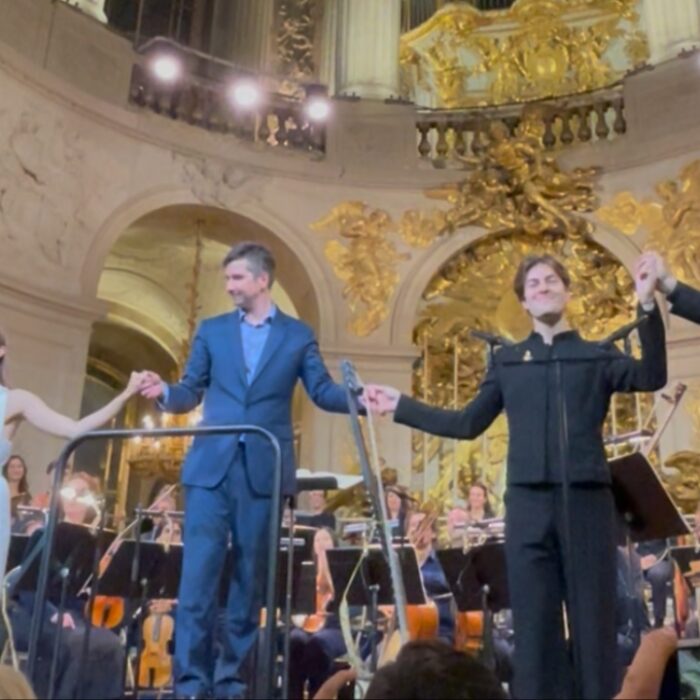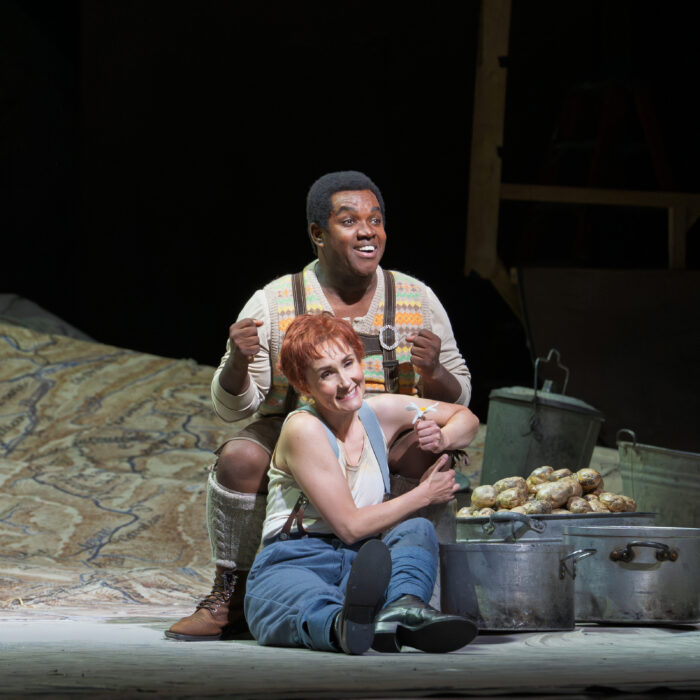
Monteverdi Festival Cremona 2024 Review: Quando Farinelli Incontrò Monteverdi
Mariño’s Flamboyant Performance Captivates the Audience
By Alan Neilson(Photo: Francesca Faelutti)
After hotfooting it across the city, the enthusiastic audience members from the festival’s first concert of the evening arrived at the Museo del Violino for concert number two, starring male soprano Samuel Mariño and the Concerto De’ Cavalieri, directed by Marcello di Lisa. Entitled “When Farinelli met Monteverdi,” the concert was described as an “imaginary but impossible occasion” in which the great 18th century castrato, interpreted by Mariño, meets with “Monteverdi, represented by some of the greatest of his opera repertoire.” It sounded like a fascinating idea.
In reality, it was not what one would have expected. Apart from the sinfonia from “L’incoronazione di Poppea,” the only piece by Monteverdi was “Quel sguardo sdegnosetto” from his “Scherzi musicali” collection, published in 1632. Everything else was from the 18th century, so that it turned into what was essentially a homage to Farinelli with little more than a nod to Monteverdi.
Not that any of this detracted from what was a very entertaining concert.
Mariño Takes Center Stage
Mariño is a singer with a distinctive stage personality. Clearly, he loves attention, but he nevertheless exhibits a degree of nervousness that can endear him to an audience. He is also a slight figure with a tendency to magnify his presence through a carefully selected choice of clothing, in this case a loose-fitting white, patterned shirt, black jeans and sandals. Likewise, he has a very distinctive voice, defining himself unambiguously as a soprano. His voice has a beautiful, sweet tone, and if you close your eyes, it is near indistinguishable from a female voice.
It is very easy to become entranced by his singing; not only is his voice very attractive, but his presentation is very flamboyant; he loves to wow the audience with his spectacular vocal agility, in which he furnishes the vocal line with ambitious ornamentations, including complex coloratura runs, clear and precise trilling and audacious leaps, which he displayed to good effect in his closing aria “Anch’il mar par che sommerga” from Vivaldi’s 1735 opera “Bajazet.” His rendition of “Quell’augellin che canta” from Vivaldi’s earlier opera “La Silvia” was also very impressive, as he engaged in a duel with the violinist as they competed in mimicking bird song.
However, there are one or two negative aspects to his presentations that can detract from the overall effect, the most notable being his breathing technique, which, on occasion, undermined the vocal line. In the first aria of the evening, “Agitata da due venti,” taken from Vivaldi’s 1724 opera “Griselda,” he was unable to attack the vocal line with sufficient punch when following on from a passage of lengthy coloratura. During the aria “Torbido, irato e nero” from Scarlatti’s 1723 opera “Erminia,” one could hear him gulping in the air at every opportunity as he struggled to deliver the very difficult coloratura runs.
Another criticism, which, to be fair to Mariño, is more a matter of taste, is that, on occasion, he appears to favour spectacle over emotional honesty, and his flamboyant vocal displays can tip the balance of the interpretation from high art into artifice.
He was not always guilty of such excess, however, and many of his arias were delivered with great sensitivity and beauty. Campra’s “Vanne penitita a piangere,” from his 1704 “Il Trionfo dell’innocenza,” showed off this quality brilliantly as he brought the piece alive as he gently caressed the vocal line, added subtle ornamentations and deployed his legato singing perfectly.
There were three musical intervals performed by the Concerto De’ Cavalieri to allow Mariño a much-needed breather. Along with Monteverdi’s Sinfonia from “L’incoronazione di Poppea,” there were performances of Corelli’s “Concerto grossi in D major N.4” from his 1714 collection of 12 concerti grossi, and of Vivaldi’s 1717 “Concerto in D major for strings and bass continuo.”
At the end of the concert, the audience responded with warm applause and brought Mariño back for a well-deserved encore, for which he gave a very emotional and deeply moving rendition of Handel’s “Lascia ch’io pianga.”
As soon as it finished, it was time to move across town once again for the third presentation of the evening, a staged performance of a collection of Monteverdi’s madrigals, entitled “Polittico Monteverdiano.”



